HBCUs
Glory has always been included in HBCUs. They represent so many things to tons of human beings. For almost two centuries in America, these institutions of higher learning have grown our souls in enumerable ways. They represent cultural excellence in full display concretely. Historically Black Colleges and Universities are always a massive part of black culture. In America, black Americans and black people from across the world have been educated in them to be the best at what they are born to be. Many of the greatest black heroes in human history were educated in HBCUs too. Chadwick Boseman was educated in an HBCU along with Keshia Knight Pulliam. Toni Braxton went to Bowie State University, Yolanda Adams went to Texas Southern University, Michael Strahan was part of Texas Southern University, and Debbie Allen graduated from Howard University. Tons of my relatives have gone to HBCUs and graduated from them. I'm from Virginia, so HBCUs are always part of our culture and existence. The camaraderie among black students, the systems of education, and the art of learning is all on full display in those universities. Those locations represent a large part of the black freedom struggle as scholars, doctors, STEM experts, athletes, teachers, judges, social activists, and other contributors to society have been graduates of HBCUs. HBCUs help to give confidence to human beings, they help to inspire hope for the future, and they make us aware of the value of Blackness. We know that there is not a solitary way to be Black. Blackness represents total diversity in all of its manifestations. Blackness is priceless, it is Beautiful, and our black identities are always sacrosanct.
The Value of Education
The common misconception is that education doesn't matter, or it only involves a 4-year college. The truth is that education is very diverse, and education is always important in the Universe. It can include a graduate college, a community college, trade schools, a 4 year college, an IT school, and other institutions allowing human beings to experience their own form of liberty and happiness. Education will always be important forever, because education gives human beings tools to be doctors, lawyers, scholars, teachers, athletes, musicians, and other legitimate participants in society. Education is about learning concepts, applying concepts in everyday life, and analyzing themes in order to creatively developing your own style. As Albert Einstein and others have said, you learn so you can teach people what you know in easy to understand terms. Doing that makes a great difference in helping humanity grow intellectually and socially. Education is beyond random memorization of definitions or words. It is about analyzing what you know, so you can build on established definitions to realize the bigger picture. The big picture is that we have this right to justice, and the establishment have a long history of trying to suppress human rights. Therefore, we should do our parts to not only expand human rights. We must make sure that real education is found among the masses of the people collectively.
Part of this education is about promoting the beauty of Blackness, loving diversity, and realizing that our intrinsic value is priceless. There is nothing wrong with being born with what we are. There is something wrong with the imperfections and the evils in society that ought to be rectified. Education has been part of the human cultural tradition for thousands of years. True education always deals with the basics of math, language, technology, science, art, athletics, and growing positive economic including social connections among the human race. According to the U.S. Department of Education, HBCUs provided undergraduate training for 75% of Black Americans holding a doctorate degree, 75% of all Black Officers in the armed forces, and 80% of all Black federal judges. Some of our greatest leaders in human history have either been educated in universities, educated by family and friends, or educated by being self-taught. Historically Black Colleges and Universities have certainly been on the forefront in allowing tons of black people to reach their goals to change the world for the better. The value of education truly is always unimpeachable.
Early HBCU History
To start, in the beginning, the roots of Historically Black Colleges came from the Motherland of Africa. The origin of the human race is in Africa, so the motivation of educational excellence originated from Africa indeed. Later, our ancestors lived in America via the Maafa. We suffered unspeakable atrocities, but that never stopped our spirits. Before the American Civil War, many HBCUs were in existence across America. Back then, black slaves were forbidden to read and write. The reason is that racists didn't want black people to rise up to end the tyranny of slavery. Yet, many black people in bondage did read and write. Many early HBCUs were established like Cheyney University of Pennsylvania in 1837, the University of the District of Columbia (then known as the Miner School for Colored Girls in 1851), and the Lincoln University in 1854. The Cheyney University of Pennsylvania was formed by the Quaker Richard Humphreys as the oldest HBCU of higher education in America. One famous alumna was the educator and civil rights activist Josephine Silone Yates. Josephine Silone Yates was one of the greatest scholars in history. She lived from 1852 or 1859 to 1912. Yates worked as a professor, writer, public speaker, and activist in the United States of America. She may have been the first black woman to hold a full professorship at any U.S. college or university. Professor yates was one of the first black professors hired at Lincoln University in Jefferson City, Missouri. She loved her 2 children she married William Ward Yates. Their children are Josephine Silone Yates Jr. and William Blyden Yates). She was so great that she was the 2nd President of the National Association of Colored Women (1900-1904). Professor Josephine Yates had excellent mathematical and writing abilities.
We know about the famous Wilberforce University. It was formed in 1856 via a collaboration between the African Methodist Episcopal Church of Ohio and the mostly white Methodist Episcopal Church. Wilberforce University was owned and operated by African Americans. In 1862, the Lemoyne-Owen College was formed in Memphis by the United Church of Christ. In 1864, Wayland Seminary was formed, and it merged with Richmond Institute to become Virginia Union University. In fact, most HBCUs were started by free black Americans and philanthropists (funded by religious groups like the American Missionary Association and the African Methodist Episcopal Church). Exactly 5 months after the end of the Civil War, Atlanta University, now Clark Atlanta University, was founded on September 19, 1865, as the first Historically Black College in the Southern United States of America. Atlanta University was the first graduate institution to award degrees to African Americans in the nation and the first to award bachelor's degrees to African Americans in the South. Clark College in 1869 was the nation's first four-year liberal arts college to serve African American students. The two universities consolidated in 1988 to form Clark Atlanta University. Shaw University was founded on December 1, 1865, and it was the 2nd HBCU to be established in the South. The year 1865 also saw the foundation of Stoner College (1865-1955) in Harper's Ferry, West Virginia. Storer's former campus and building have been incorporated into Harpers Ferry National Historical Park. During the early era of the HBCUs, they educated the children of formerly enslaved people and taught other Black Americans.
In 1862, the federal government's Morrill Act provided for land grant colleges in each state. Some educational institutions established under the Morrill Act in the North and West were open to black human beings. Yet, 17 states, almost all in the South, required their post-Civil War systems to be segregated and excluded black students from their land grant colleges. In response, Congress passed the second Morrill Act of 1890. This was known as the Agricultural College Act of 1890, requiring states to establish a separate land grant college for black people if black people were excluded from the existing land grant college. Many of the HBCUs were founded by states to satisfy the Second Morrill Act. These land grants schools continue to receive annual federal funding for their research, extension, and outreach activities. In 1866, Edward Waters College was made in Jacksonville, Florida by the AME Church. Fisk University was founded in the same year in Nashville, Tennessee. The Fisk Jubilee Singers toured to raise money for the institution. In 1866, Lincoln Institute was formed in Jefferson City, Missouri, and Rust College in Holly Springs, Mississippi was opened (One of its most famous alumna was Ida B. Wells). Hampton University was founded in 1868 in Virginia, and it was once called Hampton Normal and Agricultural Institute. Booker T. Washington graduated from Hampton University, and he formed the Tuskegee Institute later on.
By the early 20th century, we saw many black colleges and universities promoting athletics among black people. Sports were rapidly growing in state universities, but very few black stars were recruited there. There were newspapers that praised athletic successes. Black schools hired coaches, recruited and featured stellar athletes. Leagues were formed too. In 1935, Norfolk State University was created. It was originally called the Norfolk Unit of Virginia State University. Later, Norfolk State University would grow as the prominent independent HBCU of the Hampton Roads region along with Hampton University. By the 1930's, many Jewish intellectuals fled Europe after the rise of Hitler and anti-Jewish legislation in prewar Nazi Germany. Many of them found work teaching in historically black colleges. By 1933, it was a hard year for many Jewish academics who wanted to escape oppressive Nazi policies. The Nazis in Germany banned them of their positions in universities. Jewish people couldn't find work in other European countries because of the Spanish Civil War and antisemitism in general in Europe. In America, they continued their academic careers. They found little success in mostly white universities because of the antisemitism. So, we black people are a loving people. Therefore, more than 2/3s of the faculty hired them at many HBCUs from 1933 to 1945. HBCUs wanted Jewish professors to have the opportunity to show their skills in education. HBCUs always believe in diversity and giving folks opportunities no matter the race, religion, or country of origin. Giving people like women and black people open spaces to study is always important. HBCUs made substantial contributions to the U.S. war effort during WWII. For example, the Tuskegee University in Alabama was where the Tuskegee Airmen trained and attended classes.
Its Role in Cultural and Social Change
After World War II, massive changes came into HBCUs with the modern day Civil Rights Movement growing worldwide. In 1947, the Demark Technical College opened as the Denmark Area Trade School. The Trenholm State Technical College was formed in the same year at Montgomery, Alabama, as John M. Patterson Technical School. In 1948, the Church of Christ started operating the Southern Bible Institute. Today, the school is known as Southwestern Christian College. Lawson State Community College opened in Bessemer, Alabama by 1949. The Mississippi Vocational College was openened in Itta Ben in 1950. By 1958, the Interdenominational Theological Centered opened in Atlanta. Southern University at New Orleans was founded as a unit of Southern University in Baton Rouge, Louisiana by 1959. In 1961, J. F. Drake State Technical College opened in Huntsville, Alabama as the Huntsville State Vocational Technical School. In 1962, The College of the Virgin Islands opened with campuses on St. Crois and St. Thomas. The school is currently known as the University of Virgin Islands. In 1965, the federal government via the U.S. Department of Education were designed officially. In 1967, the Southern University at Shreveport was founded. In 1975, the Morehouse School of Medicine opened in Atlanta. The medical school was originally part of Morehouse College.
During the old school Civil Rights Movement era (1954-1968), nearly all Black college students were enrolled at HBCUs. The late Congressman John Lewis was a graduate of Fisk University. Lewis was born in Troy, Albama. Later, he met Rosa Parks when he was 17 and Dr King when he was 18 years old. The opening of the March on Washington in 1963 of the National Anthem was done by Virginia State University graduate Camilla Williams. The closing benediction was delivered by former Morehouse College President and Virginia Union University attendee Benjamin Mays. The heroic Gloria Richardson graduated from Howard University. Floyd McKissick went into Morehouse College, Whitney Young Jr. came into Kentucky State University, and the Mother of the Civil Rights Movement Septima Clark was a graduate of Benedict College and Hampton University. Bayard Rustin was part of Wilberforce and Cheyney Universities. Tons of people know that Jesse Jackson graduated from North Carolina Agricultural and Technical University. The Civil Rights Movement is made up of collective community of women, men, and children working together to fight for justice. From many HBCU leaders meeting with Kwame Nkrumah to fighting for Black Power, HBCUs have always been involved in the black freedom struggle. Spelman had many leaders involved in civil rights too. Spelman students worked in the Crossroads Africa Program in 1960.
In that same year, Atlanta University Center students drafted, "An Appeal for Human Rights" that was published in the Atlanta Constitution and other national newspapers on March 9. Going into the 1960s, the Spelman College students became involved in civil rights actions in Atlanta. In 1962, the first Spelman students were arrested for participating in sit-ins in the Atlanta community. Noted American historian Howard Zinn was a professor of history at Spelman during this era and served as an adviser to the Student Nonviolent Coordinating Committee chapter at the college. Zinn mentored many of Spelman's students fighting for civil rights at the time, including Alice Walker and Marian Wright Edelman Zinn was dismissed from the college in 1963 for supporting Spelman students in their efforts to fight segregation; at the time, Spelman was focused on turning out "refined young ladies." Edelman herself writes that Spelman had a reputation as "a tea-pouring, very strict school designed to turn black girls into refined ladies and teachers." That would change. Now, Spelman continues to represent some of the greatest black students in the world. Stewart retired in 1986, and the following year, Johnnetta Betsch Cole became the first Black female president of Spelman College. During this time, the college became noted for its commitment to community service and its ties to the local community. Ruby Doris Smith-Robinson was educated at Spelman, and she was one of the greatest leaders of SNCC. She passed away in 1967 because of cancer.
She was well respected by her SNCC colleagues and others within the movement for her work ethic and dedication to those around her. SNCC Freedom Singer Matthew Jones recalled, "You could feel her power in SNCC on a daily basis." Jack Minnis, director of SNCC's opposition research unit, insisted that people could not fool her. Over the course of her life, she served 100 days in prison for the movement. Kwame Ture said that Ruby Doris Smith-Robinson was a tower of strength. By 1969, Black Studies program came into Spelman University. The Black Studies movement spread across tons of HBCUs too including Howard University. Kwame True graduated from Howard University too. Unsung Civil Rights leaders from Louisiana graduated from HBCUs like Dorothy Mae DeLavallander Taylor (from Baton Rouge's Southern University and A&M College), Alexander Pierre Tureaud Sr. (Howard University Law School), Rudy Lombard (Xavier University), Jerome Smith (Southern University in New Orleans), Oretha Castle Haley including Doris Jean Castle (Southern University in New Orleans), Cecil Winston Carter Jr. (Dillard University), and David J. Dennis (Dillard University).
Issues and Triumphs
Since 1965, massive changes have existed in HBCUs. There was the reauthorization of the Higher Education Act of 1965. It made a program to direct federal grants to HBCU and to support their academic, financial, and administrative capabilities. Part B was made for formula-based grants, calculated based on each institutions' Pell Grant eligible enrollment, graduation rate, and percentage of graduates who continue post-baccalaureate education in fields where African Americans are underrepresented. Some colleges with a predominantly black student body are not classified as HBCUs because they were founded (or opened their doors to African Americans) after the implementation of the Sweatt v. Painter (1950) and Brown v. Board of Education (1954) rulings by the U.S. Supreme Court (the court decisions which outlawed racial segregation of public education facilities) and the Higher Education Act of 1965. In 1980, Jimmy Carter signed an executive order to distribute adequate resources and funds to strengthen the nation's public and private HBCUs. His executive order created the White House Initiative on historically black colleges and universities (WHIHBCU), which is a federally funded program that operates within the U.S. Department of Education. In 1989, George H. W. Bush continued Carter's pioneering spirit by signing Executive Order 12677, which created the presidential advisory board on HBCUs, to counsel the government and the secretary on the future development of these organizations.
Starting in 2001, directors of libraries of several HBCUs began discussions about ways to pool their resources and work collaboratively. In 2003, this partnership was formalized as the HBCU Library Alliance, "a consortium that supports the collaboration of information professionals dedicated to providing an array of resources designed to strengthen historically black colleges and Universities and their constituents." In 2015, the Bipartisan Congressional Historically Black Colleges and Universities (HBCU) Caucus was established by U.S. Representatives Alma S. Adams and Bradley Byrne. The caucus advocates for HBCUs on Capitol Hill. As of September 2019, there are 94 elected politicians who are members of the caucus. In January and February 2022, several HBCUs received bomb threats which disrupted academic operations. At least 18 were threatened on January 31 or February 1. At least 8 were threatened on January 4 or 5, 2022. Some reported callers to 911 identified themselves as a "neo-Nazi." In response, the FBI launched a hate crime investigation. Now, Alabama has the most active HBCUs with 12 universities. Because of desegregation, rising incomes, and increased access to financial aid, the share of black students attending HBCUs have dropped from 17 percent in 1980 to 9 percent in 2015. A large percentage of black people with bachelor and master's degrees are awarded at HBCUs. The number of total students enrolled at an HBCU rose by 32 percent from 1976 to 2015 being from 223,000 to 293,000. HBCUs have been more diverse over time as America is changing to be more diverse. HBCUs have black people, white people, Native Americans, Asians, Pacific Islanders, Hispanic people, and other human beings. Non-black people make up 22 percent of total enrollment at HBCUs. HBCUs help to improve the economy in many ways.
Vice President Kamala Harris (who graduated from the great HBCU of Howard University herself) gave a very important speech to HBCU graduates at Tennessee State University in May 2022. Her following words shows the essence of what real HBCU education is all about:
"...Your time at Tennessee State has unlocked unimaginable opportunities for your future, because you see, HBCUs like this — well, they are cathedrals of education. And the value of this education is that it teaches you something very special: That, yes, you can be anything and do anything. And this brings me to the third reason why I know that you will play an essential role in shaping our nation’s future. Each of you has your own story, your own way of looking at the world, shaped by every moment that brought you to this point.
I was around your age when I decided that I wanted to take on systemic problems from the inside of the system, that I would look for solutions through the lens of my own experience and perspectives, and that I wanted and needed to be in the rooms where the decisions were being made. Graduates, you stand on the brink of a new frontier where we are building the platforms for the next phase of technology, where we are conducting the research that will lead to the next great medical breakthrough — maybe even the cures for cancer or lupus or lifesaving reforms to maternal healthcare — where we are defining the fundamental principles that will underpin the 21st century. And we need you in the room helping to make these decisions..."
Howard University's Historic Protest
One of the most important events in HBCU history was the October 2021 protest at Howard University. Many students in the university protested the mold, mice, and substandard conditions in campus residential buildings in the Blackburn Takeover. People demanded an improvement in their living situations and representation on the board of trustees. The Blackburn Takeover student protest at Howard University, in Washington, D.C., started on October 12, 2021. Leaders of the protest included people who are Aniyah Vines, Deja Redding, Jasmine Joof, Lettirose Cargill, Cherelle Muhammad, Tyler Davis, and Elishabeth Cunningham. Social media platforms promoted this event like Instagram and Twitter. The Live Movement, which is a HBCU coalition, helped in this protest by amplifying the protest. Students didn't want mice and flooding in their living spaces. About 150 students erected a tent city outside of the Blackburn University Center to demand strong improvements in the living conditions and representation on the university's board of trustees. The students desired the following 4 demands: a town hall with President Frederick and the entire student body, student trustee positions to be permanently reinstated on to the Board of Trustees of Howard University, a comprehensive housing plan to remedy all issues plaguing on campus and off campus housing, and academic, legal, and disciplinary immunity for all of the protesters involved.
The university fought back, but the students won. The university claimed that as a result of the protest, Sodexho food service employees of the Blackburn café were laid off. Many people supported the student protest like Senator Elizabeth Warren, Reverend Jesse Jackson, rapper Gucci Mane, Debbie Allen, Martin Luther King III, Rev. William Barbert III, and local lawmakers (like At Large Councilmember Anita Bonds, Ward 4 Councilmember Janeese Lewis George). Jasmine Joof, spokeswoman for the #BlackburnTakeover, said Monday that the agreement has effectively ended their protest. "We have achieved increased scrutiny, transparency and accountability," Joof told CNN. Rev. Jesse Jackson was on the campus of Howard to help mediate the situation between students and the Howard administration. The necessity for modern-up to date housing in any campus is always important to advance. After about one month, the Howard students reached an agreement with university officials. Wayne Frederick, the president of the historically Black college in Washington, DC, said Monday afternoon that the agreement between the school and the students who occupied Blackburn University Center over poor housing concerns is a "welcome step forward." It is important to oppose evil in any campus. Many universities have victims of rape, abuse, bullying, and other mistreatment. Therefore, we have to be clear to stand for righteousness and human dignity for all. The students of Howard University in 2021 and in 2022 represent a new era of social protest and advocacy for justice.
HBCU's Continued Link to Blackness
Historically Black Colleges and Universities are always tied into Blackness forever. In black culture, hard work and education are always preeminent precepts embraced by us. Our parents and our grandparents always taught us to get up, work in various jobs, and be as outstanding as possible in our daily endeavors. For over 100 years, they have given the world many legends of business, law, science, education, military service, entertainment, art, and sports. Our people have shown excellence since the dawn of human history, as black people are the first human beings in human history. I have been to an HBCU before as many of my relatives graduated from HBCUs in real life. These colleges and universities give people a true sense of community and belonging among their own daily lives. The wisdom of Chadwick Boseman, the talent of Anika Noni Rose, the intellect of Katherine Johnson, the eloquence of Nikki Giovanni, and the genius of Spike Lee all encompass HBCU culture. In HBCUs, you see diverse backgrounds, personalities, and nationalities come together to advance the cause of education, justice, and happiness. In life, people do desire joy and peace. One way to advance those legitimate ideals is to have camaraderie with family and friends.
Augusta Savage
Living on this Earth is a gift and experiencing the 21st century is truly a blessing. As we approach the quarter century mark of this current century, it is always important to celebrate and recognize unsung legends in the world. Augusta Savage was more than an unsung legend of the culture of art. She was an educator, an activist, and a human being who changed the world in a myriad of positive ways. There is a very long tradition in African American culture and black culture globally involving the arts. We know about Coltraine, Sarah Vaughan, and other geniuses. Augusta Savage's contributions in artistic expression are vastly powerful. Back when I was in high school (1997-2001), I did sculpture. I sculpted many images. Before my time, Augusta Savage has sculpted some of the most beautiful images in human history. She lived from the start of Jim Crow to the beginning of the end of it. She saw the two World Wars, the Harlem Renaissance, and the growth of the Civil Rights Movement. Her work dealt with forming images of children, men, and women. For decades, Savage was an outspoken proponent of equal rights for all people in the world. Drawing images, developing images of people, and teaching some of the greatest artists of all time like Jacob Lawarence are all part of her splendid legacy as a black human being. Also, we have to cultivate a better future too. The past is important to know, so we can be inspired to create our own paths. Some people may deal with STEM, athletics, legal affairs, education, medicine, and in other arenas. Yet, we have to honor the right of people to decide on how to conduct their lives in a legitimate fashion. Each of us have talents and gifts from God, and we certainly ought to promote justice, fair treatment, equality, respect, and dignity for all human beings regardless of background. Augusta Savage was the icon of the ages.
Her Early Life and Education
Augusta Savage was born in Green Cove Springs (near Jacksonville), Florida on February 29, 1892. His parents are Edward Fells (a Methodist minister) and Cornelia Murphy. As a child, she made figures mostly small animals out of natural red clay of her hometown, which is Green Cove Springs, Florida. Her father was a poor Methodist minister. He didn't approve of her daughter's interest in art. Savage said that she experienced corporal hitting from her father: "My father licked me four or five times a week...and almost whipped all of the art out of me." Yet, Augusta Savage continued to do excellent art in the future. His father believed that her sculpture to be a sinful practice, due to his interpretation of the "graven images" portion of the Bible. He is incorrect, as the Old Testament condemn using graven images for idol worship, not using sculpture for artistic expression in a non-worship presentation. She persevered and the principal of her new high school in West Palm Beach, where her family relocated in 1915, encouraged her talent and allowed her to teach a clay modeling class. This started her lifelong commitment to teaching as well as to creating art.
By 1907, when she was 15 years old, Augusta Fells (her maiden name was Fells) married Joh T. Moore. The couple had a daughter named Irene Connie Moore, who was born the following year. John died shortly thereafter. In 1915, after moving to West Palm Beach, she met and married James Savage. She retained the last name of Savage throughout her life, even after the 2 divorced in the early 1920's. By 1923, she married Robert Lincoln Poston, a protege of Garvey. Poston died of pneumonia abroad a ship while returning from Liberia as part of a Univeral Negro Improvement Association and African Communities League delegation in 1924. Augusta Savage continued to model clay, and in 1919 was granted a booth at the Palm Beach County Fair where she was awarded a $25 prize and ribbon for most original exhibit. After her early success, she sought commissions for work in Jacksonville, Florida, before departing for New York City in 1921. Savage arrived with a letter of recommendation form the Palm Beach County Fair official George Graham Currie for the sculptor Solon Borglum and $4.60. When Borglum discovered that she could not afford tuition at the School of American Sculpture, he encouraged her to apply to Cooper Union. That was a scholarship based school in New York City where she was admitted in October 1921. She was selected before 142 other men on the waiting list. Her talent and ability impressed the Cooper Union Advisory Council. Augusta Savage was awarded additional funds for room and board after losing the financial support of her job as an apartment caretaker. She studied under sculptor George Brewster from 1921 to 1923. Savage completed the four year degree course in three years.
Augusta Savage finished her studies at Cooper Union. Then, she worked in Manhattan steam laundries to support herself and her family. Her father was paralyzed by a stroke, and the family's home was destroyed by a hurricane. Her family from Florida moved into her small West 17the Street apartment. During this time, she had her first commission from the New York Public Library on West 135th, a bust of W.E.B. Du Bois. Augusta Savage made outstanding sculptures of one bust of Marcus Garvey, another bust of William Pickens Sr. (a key figure in the NAACP), etc. She earned praise for depicting African Americans in a more humane, neutral way without stereotypical images. By the spring of 1923, Savage applied for Summer art program at the Fontainebleau School of Fine Arts in France. She was accepted. The American selection committee was racist and rescinded the acceptance offer, because she was black. Savage was upset and questioned the committee. She started the first of many public fights for equal rights in her life by writing a letter to the New York World. She made many appeals to the French government to reinstate the award. They had no effect, and Savage wasn't able to study at the Fontainebleau School of Fine Arts. The incident got press coverage on both sides of the Atlantic, and eventually, the sole supportive committee member cultpro Hermon Atkins MacNeil (who was at one time had shared a studio with Henry Ossawa Tanner) invited her to study with him. She later called him as one of her teachers. In 1925, she won a scholarship with the help of W.E.B. DuBois to the Royal Academy of Fine Arts in Rome. This scholarship only covered tuition, and after being unable to raise money for travel and living expenses, she was unable to attend. The sick writer during the 1920's Joe Gould harassed her during this time too. Augusta Savage won the Otto Khan Prize in a 1928 exhibition at The Harmon Foundation with her submission of Head of a Negro. Yet, she was an outspoken critic of the fetishization of the stereotypical "negro" aesthetics favored by many white patrons at that time. She publicly critiqued the director of The Harmon Foundation, Mary Beattie Brady, for her low standards for Black art and lack of understanding in the area of visual arts in general.
Pooled resources helped her a lot in 1929. They came from the Urban League, Rosenwald, Foundation, a Carnegie Foundation grant, and donations from friends plus former teachers to help her to travel to France at 37 years old. The Julius Rosenwald Fund helped Savage to enroll and attend the Academie de la Grand Chaumiee, a leading Paris art school. She lived in an apartment in Montparnassee and work in the studio of M. (Felix) Bennetau (Desgrois), a professor at the Academie de la Grande Chaumiere. She was in the studio was initially encouraging her work. Savage later wrote that "...the masters are not in sympathy as they all have their own definite ideas and usually wish their pupils to follow their particular method..." and began primarily working on her own in 1930. In Paris, she also studied with the sculptor Charles Despiau. She exhibited, and twice won awards, at the Paris Salon and at one Exposition. She toured France, Belgium, and Germany, researching sculpture in cathedrals and museums.
Her Career and Teaching
By 1931, she returned to the United States of America. She was energized from her studies and achievements. The Great Depression almost stopped art sales. She continued onward, and in 1934, she was the first African American artist to be elected to the National Association of Women Painters and Sculptors. She launched the savage Studio of Arts and Crafts, located in a basement on West 143rd Street in Harlem with the help of a grant from the Carnegie Foundation. She opened her studio to anyone who wanted to pain, draw, or sculpt. She inspired many young students to do art like the famous Jacob Lawrence, Norman Lewis, Gwendolyn Knight. Another student was the famous sociologist Kenneth B. Clark, whose later research contributed to the 1954 Supreme Court decision in Brown v. Board of Education that ruled school segregation unconstitutional. In 1937, Augusta Savage was the director of the Harlem Community Art Center 1,500 people of all ages and abilities participated in her workshops, learning from her multi-cultural staff and showing work around New York City. Funds from the Works Progress Administration helped out, but old struggles of discrimination existed between Savage and the WPA. WPA officials objected to her having a leadership role which is a shame. August Savage was one of four women and only two African Americans to receive a professional commission from the Board of Design to be included in the 1939 New York World's Fair. Savage was commissioned to create a sculpture showcasing the impact that Black people have had on music. She created Lift Every Voice and Sing (also known as "The Harp"), inspired by the song by James Weldon and Rosamond Johnson. The 16-foot-tall plaster sculpture stood in front of the Contemporary Arts Building and was one of the most popular and most photographed work at the fair; small metal souvenir copies were sold, and many postcards of the piece were purchased. The work reinterpreted the musical instrument by featuring 12 singing African American youth in graduated heights as its strings, with the harp's sounding board transformed into an arm and a hand. In the front, a kneeling young man offered music in his hands. Savage did not have funds to have the piece cast in bronze or to move and store it, and so like other temporary installations, the sculpture was destroyed at the close of the fair.
Savage opened two galleries whose shows were well attended and well-reviewed, but few sales resulted, and the galleries closed. The last major showing of her work occurred in 1939. Deeply depressed by her financial struggle, in Savage moved to a farmhouse in Saugerties, New York in 1945. While in Saugerties, she established close ties with her neighbors and welcomed family and friends from New York City to her rural home. Savage cultivated a garden and sold pigeons, chickens, and eggs. The K-B Products Corporation, the world's largest growers of mushrooms at that time, employed Savage as a laboratory assistant in the company's cancer research facility. She acquired a car and learned to drive to enable her commute. Herman K. Knaust, director of the laboratory, encouraged Savage to pursue her artistic career and provided her with art supplies. Though her art production slowed down Savage taught art to children in summer camps, and sculpted friends and tourists, and explored writing children's stories. Her last commissioned work was for Knaust and was that of the American journalist and author Poultney Bigelow, whose father, John, was U.S. Minister to France during the Civil War. Her few neighbors said that she was always making something with her hands.
Later Years and Her Passing
Much of her work is in clay or plaster, as she could not often afford bronze. One of her most famous busts is titled Gamin which is on permanent display at the Smithsonian American Art Museum in Washington, D.C.; a life-sized version is in the collection of the Cleveland Museum of Art. At the time of its creation, Gamin, which is modeled after a Harlem youth, was voted most popular in an exhibition of over 200 works by black artists. Her style can be described as realistic, expressive, and sensitive. Though her art and influence within the art community are documented, the location of much of her work is unknown. Savage moved in with her daughter, Irene, in New York City when her health started to decline, she later died of cancer on March 26, 1962. While she died in relative obscurity, Savage is remembered today as a great artist, activist, and arts educator; serving as an inspiration to the many that she taught, helped, and encouraged.
Augusta Savage's Legacy
One of the most underrated artists of human history was Augusta Savage. She lived in a time decades before the 21st century, but her impact in the culture of artistic expression was widespread. Augusta Savage was one of the most unsung artists in human history. She wanted her legacy to inspire younger, future generations to form sculptures, paintings, and other forms of works of art. By the 1930's, people worldwide knew her in Harlem as a sculptor, art teacher, and community art program director. Harlem is an epicenter of black glorious culture. Like many people, she was born in the south in Georgia. Later, Augusta Savage studied worldwide from America to Paris to cultivate her wisdom in art history and other aspects of designs. Her accomplishments existed by her own hard work, determination, and faith in justice. Savage worked in many jobs to provide for her own livelihood, but she never gave up on her dream to create sculptures. Gamin was a bust of her nephew. She wanted to portray accurate images of black human beings, because back in the day stereotypical images of people of black African descent were commonly promoted by racist individuals. Augusta Savage wanted that situation abolished completely. Savage was the first director of the Harlem Community Art Center and made a sculpture to represent the musical contributions of African Americans at New York World's Fair of 1939. During her later years, Augusta Savage taught children in local summer camps, wrote children's stories, wrote other stories, and produced portrait sculptures of tourists. She loved her daughter, and now we know more of her life. She was the icon of the arts.
Honor to Black Artists
It is always important to give respect to black artists for many reasons. They are the first humans on Earth, and their art describes wisdom, beauty, and diversity of thought. Imagination is found among black artists who desire to paint images, sculpt objects, use digital art, draw images, work on magazines, create comics, and develop other means of human self-expression. There are many famous and unsung black artists with equal importance that has changed the world with their creativity. It is important to know their names and stories too. Kara Walker is part of the new school art scene and has done many works of art with paint including silhouettes. She tackles issues of politics, race, gender, etc. She was born in Stockton, California. In our generation, she is one of the most acclaimed Black American artists indeed. Jacob Lawrence was an innovator of art indeed. He not only painted about historical subjects. He showed images related to Harlem, NYC. As a professor at the University of Washington, Lawrence has inspired future artists to show their gifts to the world. He is one of the greatest artists in history. His work like the 1947 painting of The Builders is found in the White House. Jean-Michel Basquiat innovated graffiti and abstract art in New York City. The art of the Brooklyn Museum of Art inspired him. His father was Haitian, and his mother was Puerto Rican. Basquiat was fluent in French, Spanish, and English. By the 1970's, he started his work.
Gordon Parks was a genius photographer, musician, writer, and film director. His photojournalist career mentioned issues of poverty, civil rights, and African American culture. His career stretched decades. He worked on Shaft and the Learning Tree films. Many of his photographs were featured in Life Magazine. Gordon Parks was the first African American to produce and direct major motion pictures relating to the experience of slaves and struggling black Americans in the modern age (after Micheaux). He helped to expand the blaxploitation genre. He had photos back in the 1940's. Gordon Parks made oil paintings too. He worked with Essence magazine. Parks was a friend to Malcolm X, and Malcolm X asked him to be the godfather of his daughter Qubliah Shabazz. Parks inspired future black directors like Spike Lee. Fort Scott, Kansas is the location of Gordon Parks' birth. He has won many prestigious awards like the NAACP Image Award in 2003, the PGA Oscar Micheaux Award in 1993, the National Medal of Arts award in 1998, and the Spingarn Medal in 1972. Edmonia Lewis was a famous African American/Native American sculptor too. She made sculptors of black people and Native people in a Neoclassical style. Edmonia Lewis knew how to fish, swim, and make moccasins. She was inspired by abolitionists and Civil rights heroes. James Van Der Zee is a famous artist who made photographs of mostly black New Yorkers. He was a major person of the Harlem Renaissance. He loved his wife and children too. Modern black artists are people like Faith Ringgold, Henry Taylor, Kehinde Wiley, Philemona Williamson, Carrie Mae Weems, Yinka Shonibare, Keith Knight, Bis a Butler, Amy Sherald, El Antasui, and other human beings. Forever, we realize that art is not only beauty. Art is the manifestation of imagination, the mind, and of creativity in general.
.jpg/1024px-Institute_for_Colored_Youth_Building_Historical_Marker_915_Bainbridge_St_Philadelphia_PA_(DSC_2640).jpg)



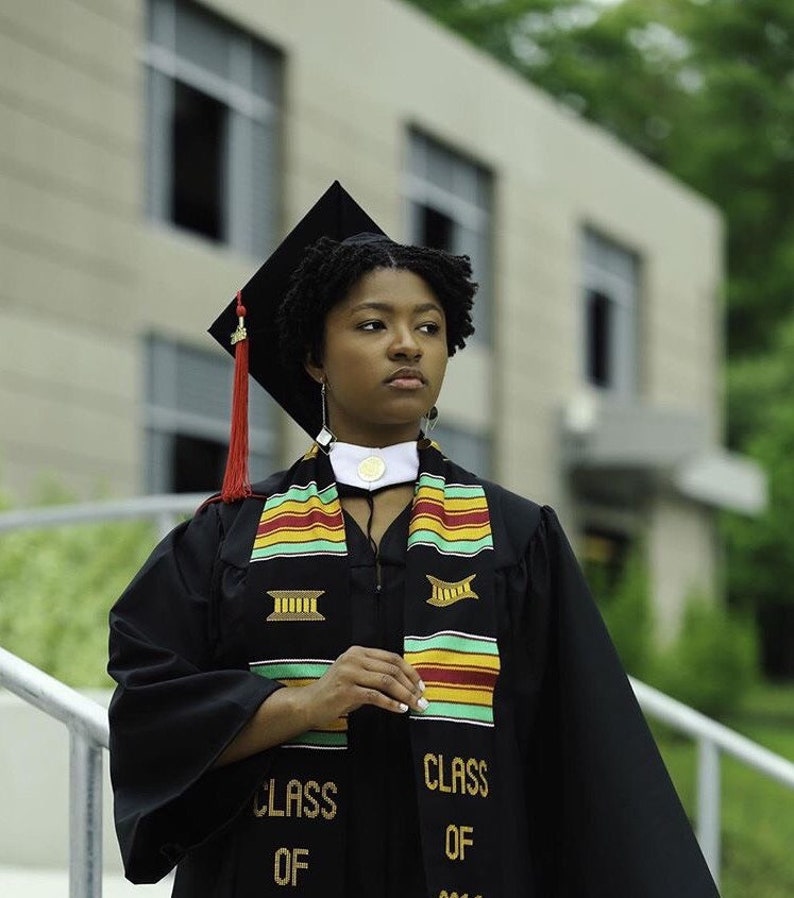


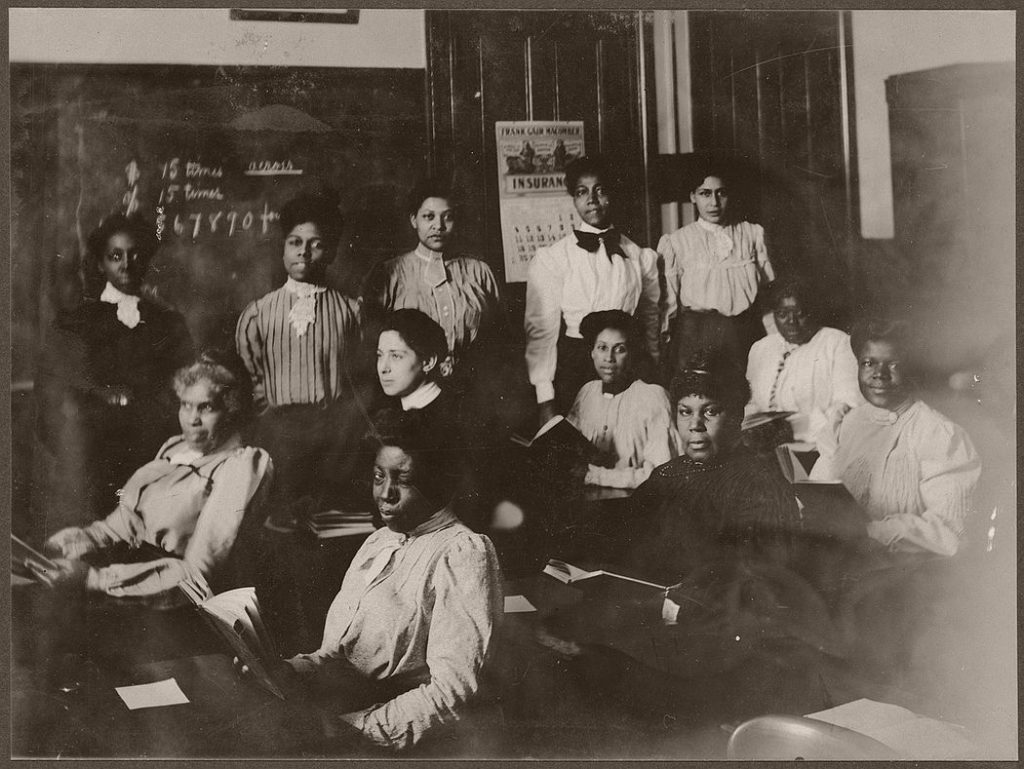
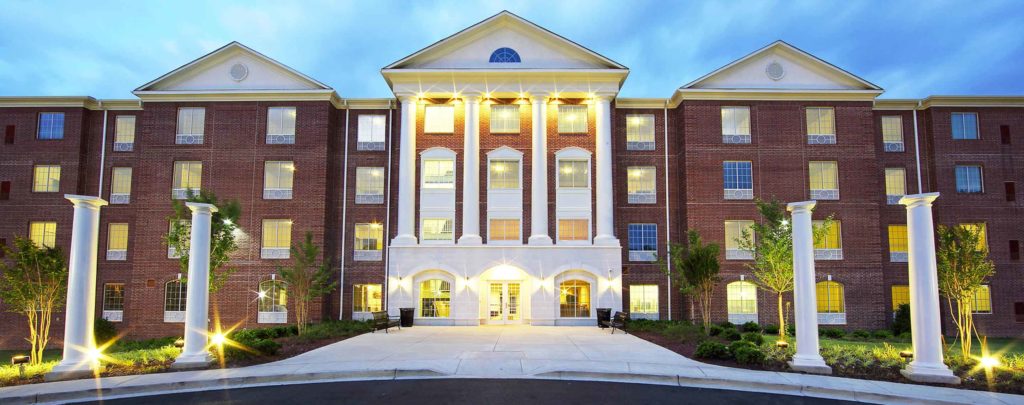

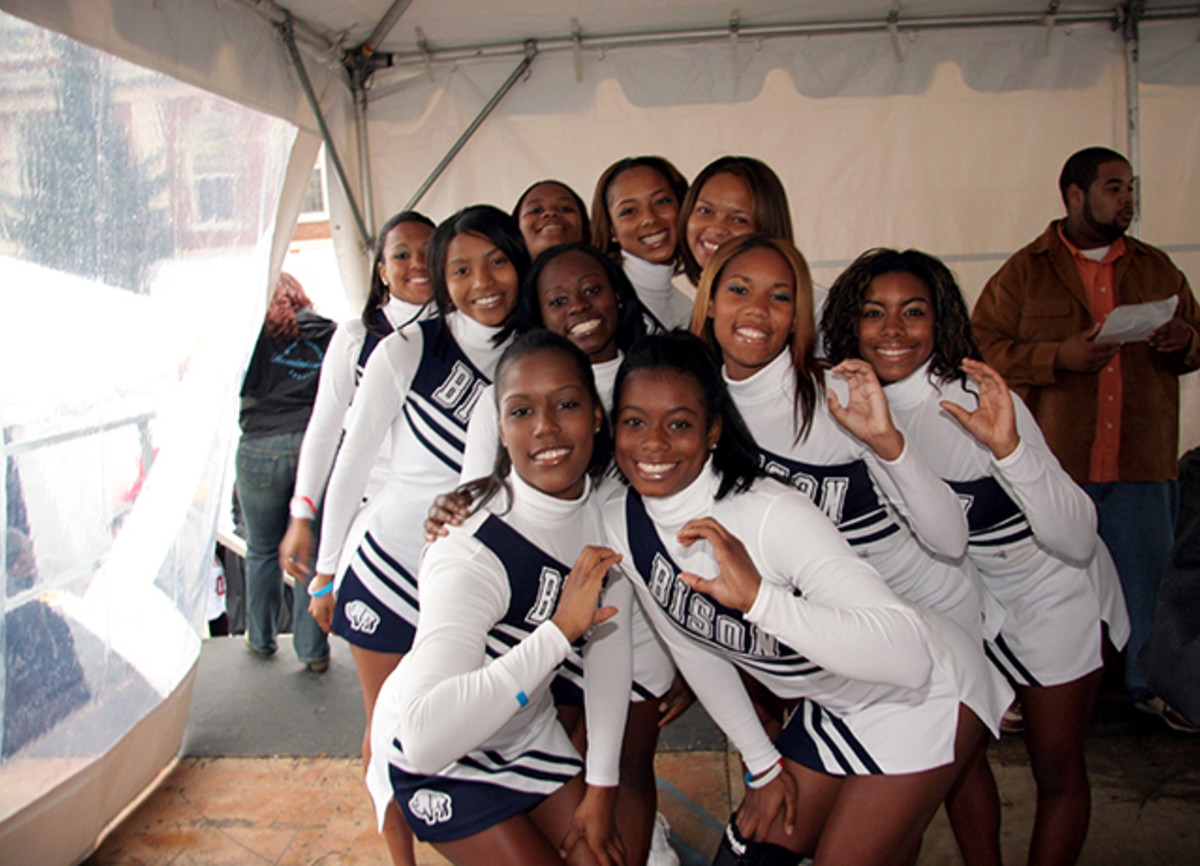


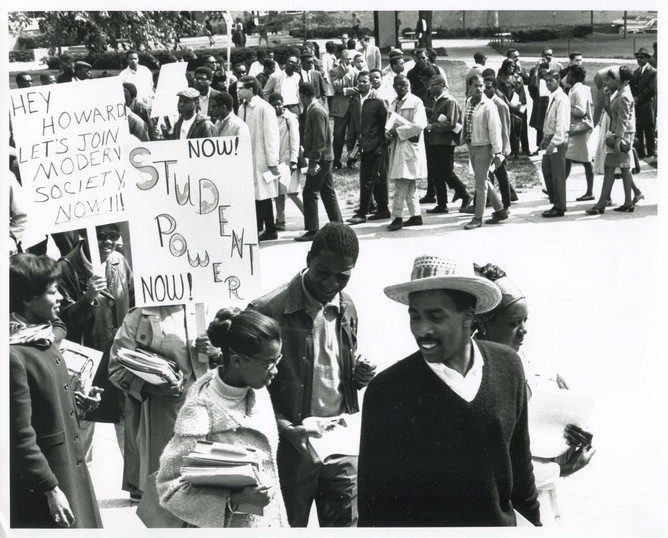

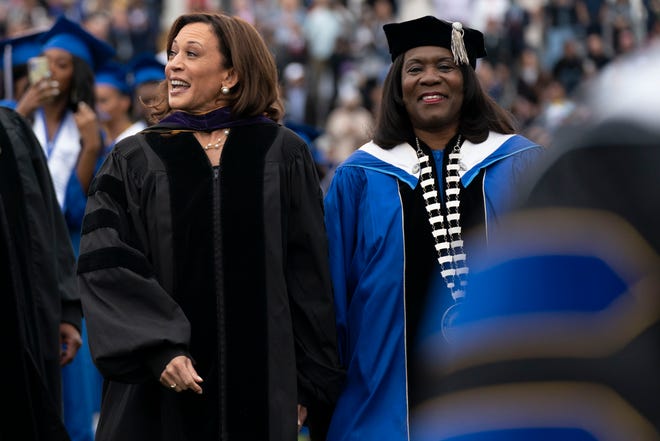
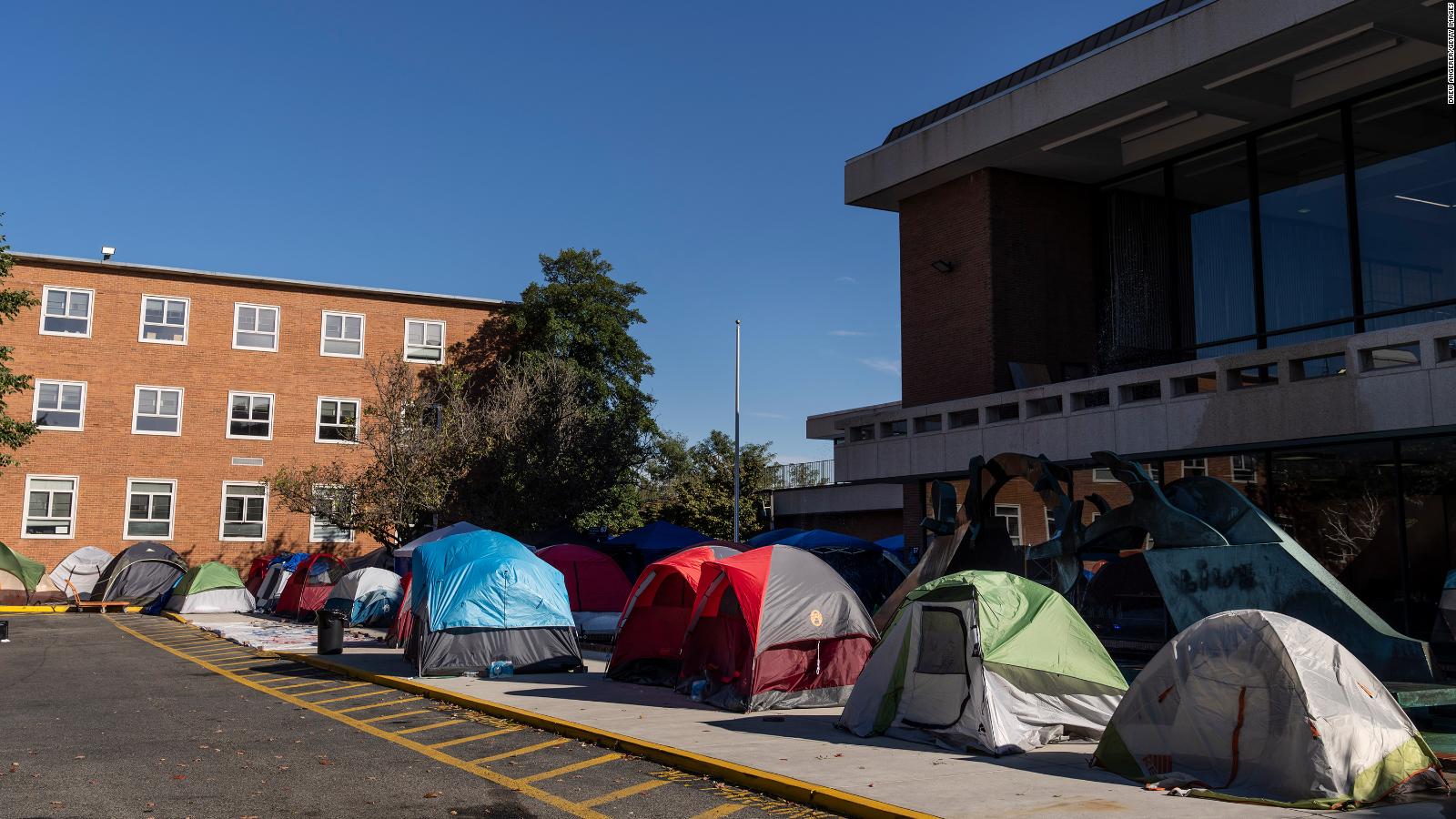

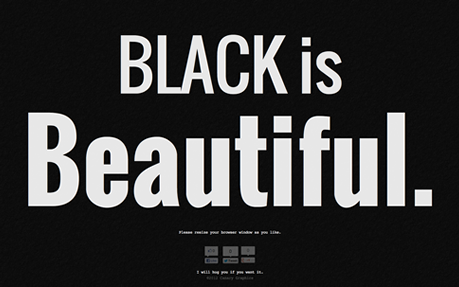






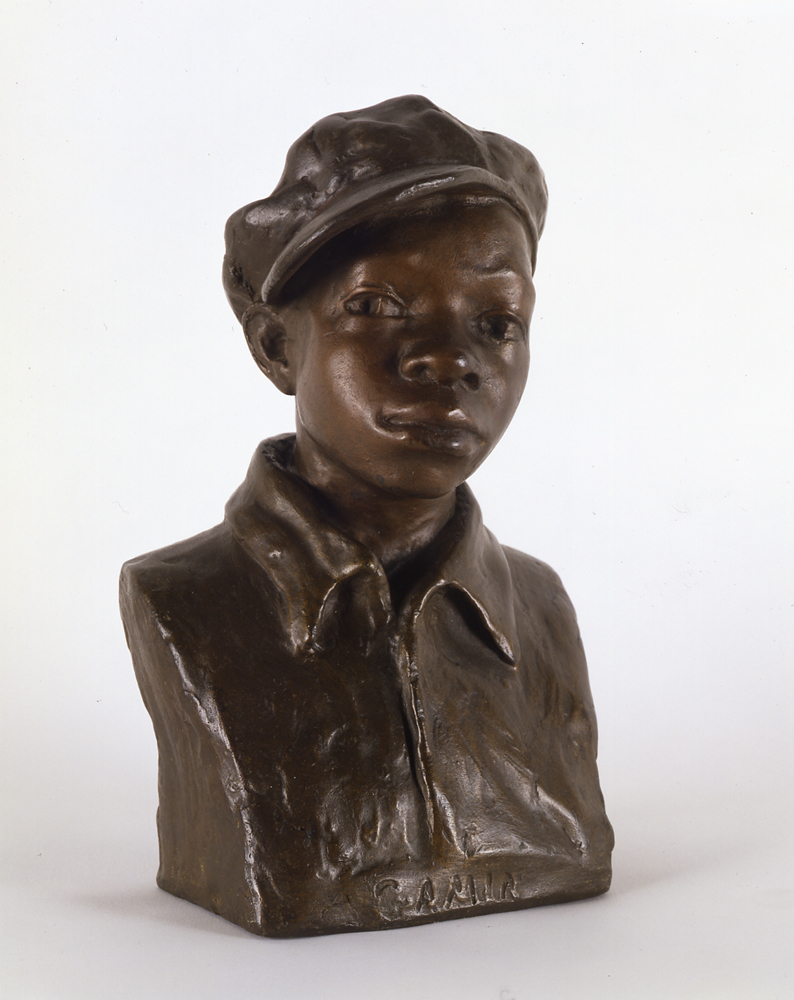





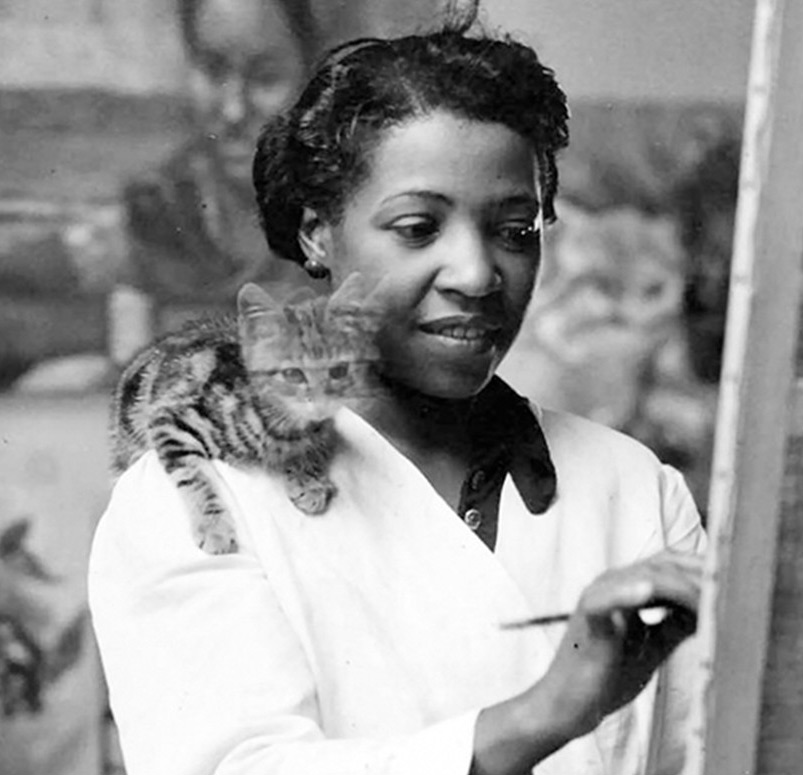

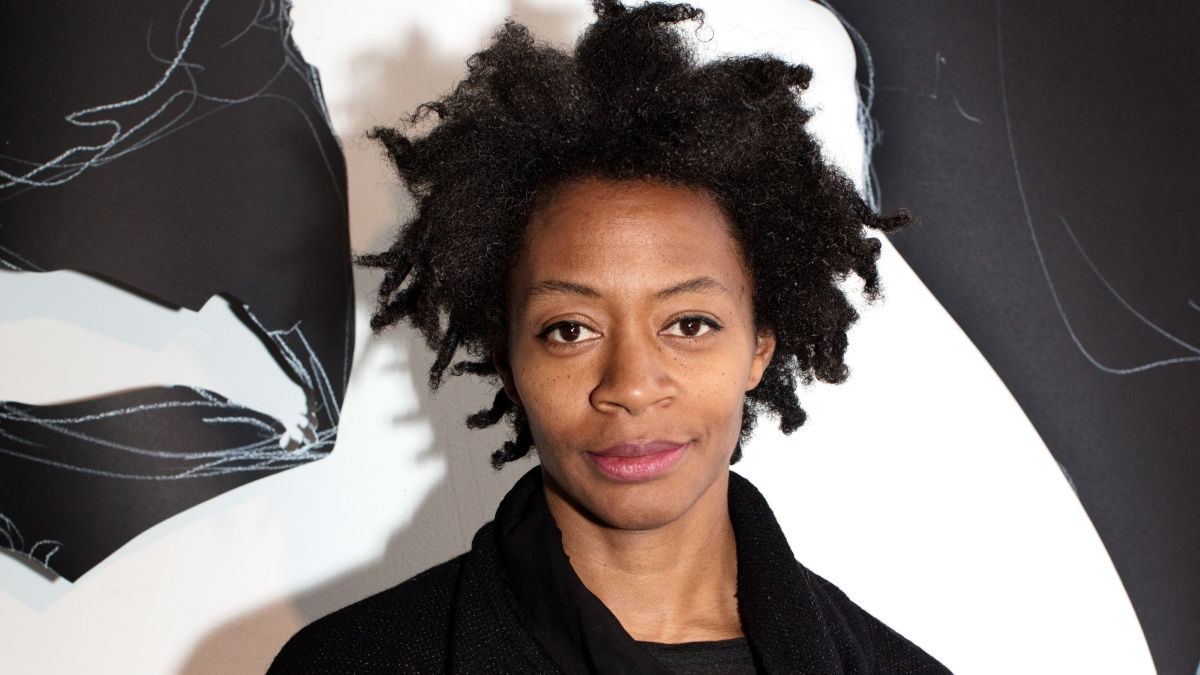
No comments:
Post a Comment